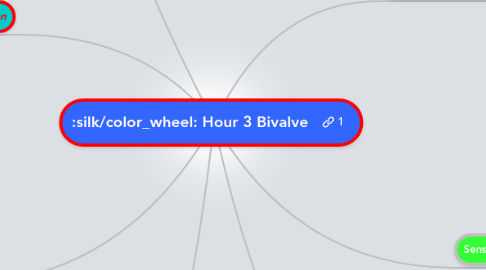Hour 3 Bivalve
by Karla Lockman

1. Respiration
1.1. These gills take in oxygen from the water and absorb it........
1.2. The gills are located on the mantle part of a bivalves body, which is located within it's shell.
1.3. All bivalves take in oxygen through gills; similar to fish.
2. Anatomy
2.1. all bivalve's have an outer shell they use for protection from predators and that open and closes
2.2. has a soft body on the inside of the hard outer shell
2.3. in the inside of the shell it holds the gills, foot, and other organs
3. Repreoduction/Life Cycle
3.1. Some bivalve animals use external fertilization
3.2. Reproduction involves eggs and sperm.
3.3. Eggs are released from the females and males release there sperm and then they conjoin to fertilize the egg.
4. Circulation
4.1. All bivalves have an open circulatory system.
4.2. Blood is what delivers oxygen from the gills to the organs.
4.3. Blood is pumped out through the heart and flows into internal cavities and over cells and various organs.
5. Feeding/Digestion/Excretion
5.1. Bivalves are all filter feeders. The food and water goes in through an incurrent siphon and water exits through the excurrent siphon.
5.2. Cilia on the gills move the food into the mouth so it can be digested.
5.3. Food is broken down by enzymes in the intestines.
5.4. After being digested, waste is expelled by the anus.
5.5. Most Bivalves eat by filtering small particulate such as plankton.
5.6. Gills would be used as eating helping traping food and mucus in the mouth.
6. Senses/Response
6.1. Most of the animals in the bivalve group have a simple nervous system that allows them to senses the world around them. Most of the time with simple eyes that can only see changes in light and dark. If they sense danger, they simply close there hard shells around themselves.
7. Movement
7.1. They have an appendage called a "foot", this is used to pull the organism along and helps it burrow into the sand.
7.2. Water currents can move the organism along too.
7.3. Valve muscles are also used to open and close their shell.


